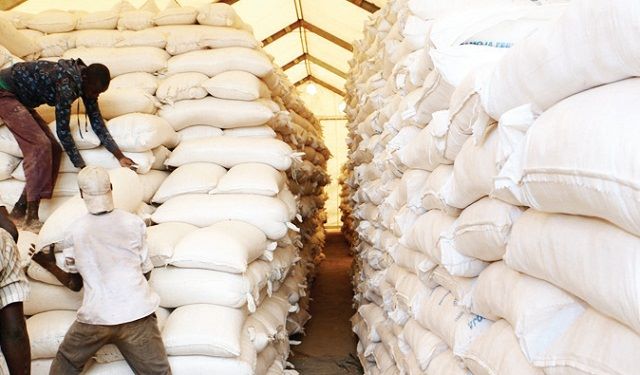
Small-scale farmers in rural Uganda are set to benefit from a project launched by the Danish Government through Danish Development Agency (DANIDA) in collaboration with other organisations in Uganda to help farmers improve grain handling standards.
The project dubbed Integrated Grain Handling Project has been designed to address some of the challenges in the grain value chain, targeting farmer yields, post-harvest quality of grain, and improving livelihoods through access to quality and value markets.
This follows recent reports that showed that several food stores, especially school grain stores, had huge concentrations of aflatoxins, a poisonous substance produced by certain fungi found on crops such as maize, and which thrives in dump or moist conditions.
According to Signe Winding Albjerg, the Ambassador of Denmark to Uganda, the climate unpredictability is also becoming a big challenge to post-harvest handling for Ugandan farmers as sometimes dry weather suddenly turns into rain, affecting the drying grain. The ambassador says that the program is also a response to this challenge.
Post-harvest grains processing
The Integrated Grain Handling Project, courtesy of BM Silo, is set to facilitate the supply and installation of post-harvest cleaning and drying equipment, whole grain milling machinery, and seed cleaning devices. The capacity of this equipment ranges from 6.5 to 40 metric tonnes per day, contingent on the availability of financing.
Henrik Anker-Lagefoged, who serves as the Regional Director for Access2Innovation, explained that the storage and drying facilities established in Kakiri, now owned by the Wekembe Cooperative Society, were established in response to the farmers’ challenges in providing clean grain.
He also pointed out that farmers were earning considerably less compared to traders or intermediaries who purchased grain from the farmers and sold it to various organizations.
Other organisations involved
The program, initiated by “Access2innovation,” a Danish platform focused on innovative, sustainable, and commercially viable solutions for emerging African markets, receives support from BM Silo, Engsko, and Buurholt, all based in Denmark.
Additionally, it has two Ugandan partners, Ag Ploutus and Opportunity International.
The project’s goal is to expand these facilities to grain-producing regions throughout the country. However, DANIDA notes that the costs are often prohibitive for farmers and cooperatives.
Therefore, they are collaborating with financial institutions to connect farmer cooperatives with lenders. In addition to this, they are providing training and access to markets and agricultural inputs, as highlighted by Anker-Lagefoged.
Humphrey Mutaasa, the Chief Technical Advisor at the Grain Council of Uganda, emphasized the need for greater government involvement, including sector regulation, to complement the efforts of the private sector and development partners.
Mutaasa commended DANIDA and the other partners for the post-harvest handling system. He noted that farmers sometimes sell wet grain due to the short window between the dry harvesting season and the rainy planting season. However, he also pointed out that the government had neglected its duty to regulate the agriculture sector, allowing grain buyers, including foreigners, to purchase produce directly from the field, which impacted quality standards.
Mutaasa advocated for the implementation of small-scale and appropriate technology agricultural systems in rural areas to support smallholder farmers. He proposed empowering cooperatives to acquire larger facilities. The underlying goal of DANIDA’s partnership is to provide rural farmers with improved drying and handling facilities, ultimately enhancing the quality of the country’s agricultural products for both local consumption and export markets.








